Raven Returns
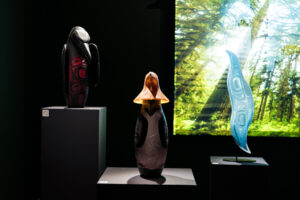
Raven is Back!
Raven, the creator in the Tlingit mythology, rescued humans from darkness by stealing the sun.
“He was a white bird and the world was in Darkness. Raven decides he will try and do something about the darkness, for himself and for the world. As he follows the Nass River, he encounters the Fishermen of the Nights … They tell Yeil ( as Raven was then called) that Nass Shaak Arankaawu ( the Nobleman at the Head of the Nass River) has many treasures in his Naa Kanidi ( Clan House)including beautifully carved boxes that house the light,” So Raven having disguised himself as a seed swallowed by a princess who gave birth to a human baby, enchanted her grandfather and then took the stars, and moon out of their boxes and liberated them. He transformed back into a Raven and flew away to liberate the sun ( see my blog post about Preston’s show in Tacoma on this story)
Preston Singletary wondered what Raven has been doing since mythic times, so in his new series of glass works he brings Raven back, he wakes him up to our disastrous world. This exhibition (which unfortunately closed on June 1 but there is a free catalog) includes Raven responding to the damaged world, as well as new stories “New Takes on Traditional Stories” written by collaborator Garth Stein. His texts are written on the wall above the Raven sculptures tell of the challenges Raven faces as he emerges in the world of today.

“I Dream Therefore I am Raven”
Most of the exhibition is contained in the smaller room at Trevor Gallery, a low lighted space with a large photo of the forest at one end. Interspersed throughout the room are the new Raven sculptures: it feels like we are walking into the forest with Raven all around us joining him in his challenges.
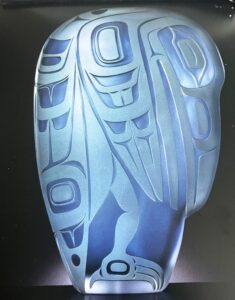
Just outside the entrance is a green blue glass piece Raven’s Dream. Raven dreams of the World Before with clear skies, clean water, uncorrupted animals, “magnificent salmon, bellies ripe to bursting with roe hurling themselves up river to spawn. …Before the world turned on itself with contempt and tore itself apart.” The blue glass raven, as all the ravens in the exhibition, is created by first blowing the glass in a kiln, letting it cool, then carving (sandblasting) the designs that he wants. His images are based on traditional Tlingit form lines, but they are directly related to the stories of Raven’s adventures.
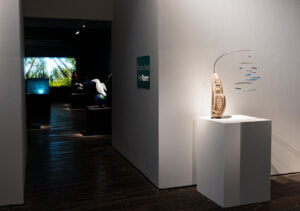
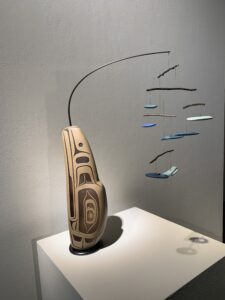
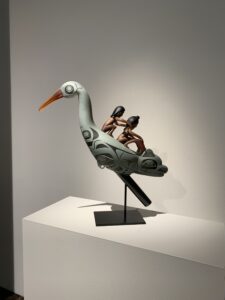
To the right of the entrance is “Blue Light Spirit Mobile” suggesting blue spiritual light floating in the air. Nearby is “Communicating with the Spirits” two children riding on a composite bird/animal that is a shaman’s stick. These works set the stage for our entrance into Raven’s experiences.
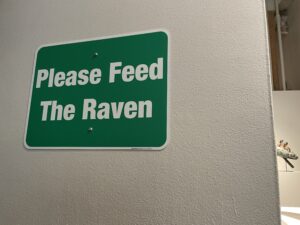
In the narrow entrance signs say “Have you fed the Raven today” and “Please Feed the Raven.” In the stories Raven is constantly in pursuit of food, as he realizes how degraded the salmon and berries he is given have become.
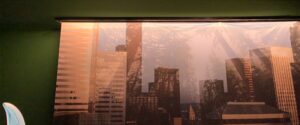
![]()
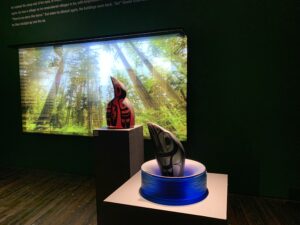
Just as he is waking up from the lush unspoiled world, he sees skyscrapers, but only for the blink of an eye. A large photograph of the forest at the end of the room briefly transforms into a scene of tall skyscrapers , then returns to the forest.
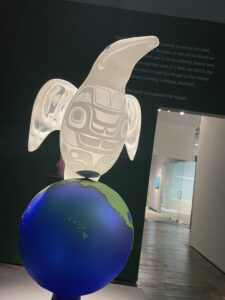
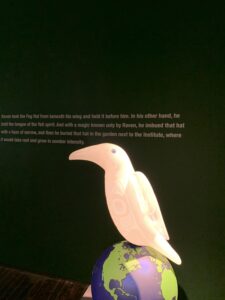
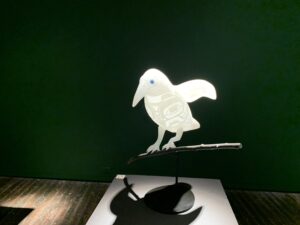
Near the entrance we see two white Ravens, one atop a globe and one on a stick. Raven was originally white, but when he stole and released the stars, moon and sun, the Chief was so angry that he threw ashes at him and turned him black. But after sleeping for such a long time Raven grew new feathers and turned white again. As he arrives among people all glittering and white, they stare at him, so he decides to rub himself with ashes and turn black again so no one will notice him.
Preston: “In my interpretation of what is happening now I want to believe that Raven is battling climate change, protecting the Murdered and Missing Indigenous Women, or helping discover the Boarding School grave sites.”
His first stop is for food, and although he is welcomed, the food he is given does not satisfy him at all, so he seeks the salmon in the river.
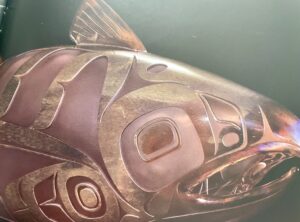
The Salmon King sculpture is orange glass as befits a salmon, and he advises Raven on how to bring the salmon to him by expressing gratitude.
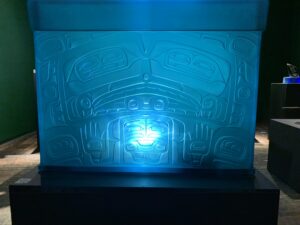
The blue glass “Yeti” box called Weird Adventure. Yeti refers to a type of fancy contemporary cooler. The pattern on the box is based on those of traditional bentwood boxes.
Raven opens the box and finds it empty so he crawls in and closes it, then is swept out to sea. He does battle with evil spirits, then through his magical talents creates a way out.
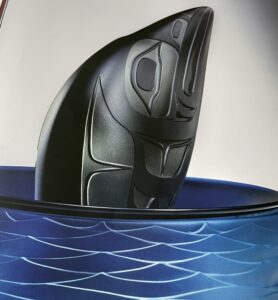
Raven through a hole in the ocean represents his escape as he emerges.
![]()
![]()
![]()
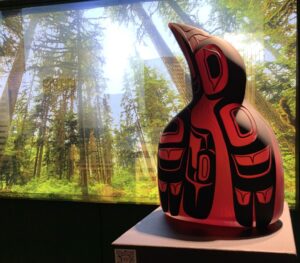
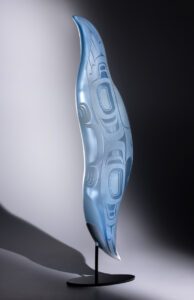
Raven cries to purify the water and to melt the frozen river to liberate the fish there.
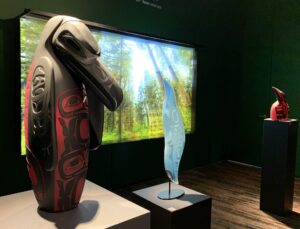

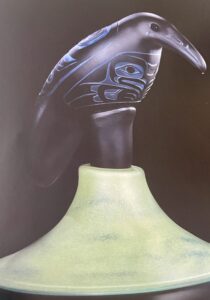
Raven visits the grave sites of the children who have died at boarding school; he comforts them with a fog hat which he has taken from a Petrel by trickery.
Raven Protects the Children with faces of children between his wings is one of the most touching in the exhibition. It underscores the extent to which Singletary transforms the traditional vocabulary of Haida sculpture while still staying true to its aesthetic.
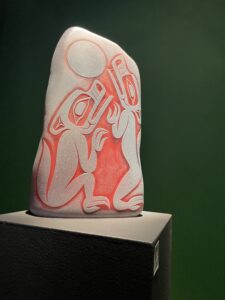
The final event is Wolf sitting on a Rock “observant, cunning, ruthless, merciful, the spirit he would need to lead People into the Future World.”
It is hard to overstate how creative this collaboration is between Stein and Singletary. The sculptures each convey the poignancy of the stories. They are all subtly colored, red, yellow, blue and created with blown and sand carved glass compressed within a larger shape and the form lines of traditional Tlingit sculpture.
Stein’s stories seamlessly bring together the mythic and the contemporary in narratives that both tell us of the degraded state of the world, and the possibilities for healing it.
Yet we see how much must be done. That is why Raven in the end dons a warrior hat 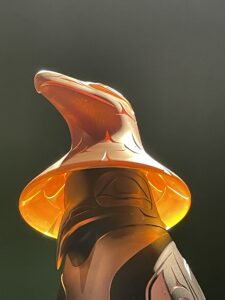
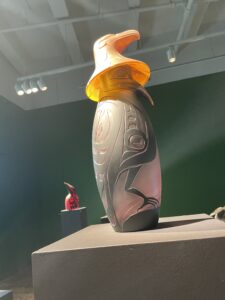
and seeks the help of other animals and birds in his quest.
These hypnotic stories and sculptures give us a deep sense of the quest we must all pursue.
This entry was posted on June 8, 2024 and is filed under Uncategorized.








